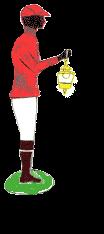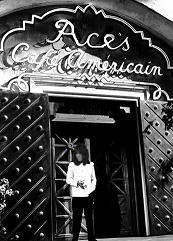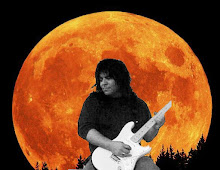Jocko Graves, Boy Hero of the Revolution (1776)

Jocko or the Lawn Jockey is seen in the South and in the Appalachian's of the United States.
Many have been destroyed because of the thinking that they are a racial slur to African-Americans. But is this true?
The River Road African American Museum in Louisiana tells us that lawn jockeys represent nothing of the sort, rather they show us a proud moment in U.S. history.
The story begins the icy night in December 1776 when General George Washington decided to cross the Delaware River to launch a surprise attack on the British forces at Trenton.
Jocko Graves, a twelve-year-old African-American, sought to fight the Redcoats, but Washington deemed him too young and ordered him to look after the horses, asking Jocko to keep a lantern blazing along the Delaware so the company would know where to return after battle. Many hours later, Washington and his men returned to their horses who were tied up to Graves, he had frozen to death with the lantern still clenched in his fist. Washington was so moved by the young boy's devotion to the revolutionary cause he commissioned a statue of the "Faithful Groomsman" to stand in Graves's honor at the general's estate in Mount Vernon.
By the time of the Civil War, these "Jocko" statues could be found on plantations throughout the South: like the North Star that pointed fleeing slaves to their freedom, the Jocko statues pointed to the safe houses of the Underground Railroad. Along the Mississippi River, a green ribbon tied to a statue's arm — whether clandestinely or with the owner's knowledge — indicated safety; a red ribbon meant danger. Thus these original lawn jockey statues today fetch thousands of dollars as true artifacts of the Underground Railroad that conducted so many African-American slaves to freedom.
Similar cast-iron statues began appearing in the decades after Washington's crossing of the Delaware in jockey silks, whether for aesthetic reasons or confusion born of Graves's first name. The clothing worn by the lawn jockeys resembled the clothing worn by black riding jockeys, who have a glorious history. In 1875, the first 13 winners of the Kentucky Derby were black, the first being Jockey Oliver Lewis. Lewis was the first to win three Derbies.
So contrary to some folk's thinking that these statues are a racial slur they are a memorial to Jocko, a beacon for Freedom and a tribute to some of the greatest Jockey's racing has ever known!



0 Comments:
Post a Comment
Subscribe to Post Comments [Atom]
<< Home